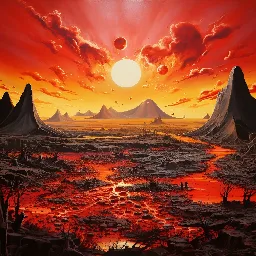The Search for Extraterrestrial Life: The Evolving Definition of Habitability
The Search for Extraterrestrial Life: The Evolving Definition of Habitability
The quest to find life beyond Earth has long been a topic of fascination for scientists, scholars, and the general public alike. Central to this pursuit is the concept of “habitability,”…

Traditional Views on Habitability: The Goldilocks Zone
Traditionally, the search for habitable environments beyond Earth has centered around the concept of the “Goldilocks Zone” or the “Habitable Zone.” This is the region around a star where conditions are just right—neither too hot nor too cold—for liquid water to exist on a planet’s surface. The presence of liquid water has been considered a critical factor for life as we know it, mainly due to its role as a universal solvent in biochemical processes. This notion has shaped many astronomical surveys and planetary missions, focusing on planets that reside within this special zone around their host stars.
Expanding the Parameters: Extremophiles and Alternative Solvents
Recent discoveries in the field of astrobiology have begun to challenge and expand our understanding of habitability. Organisms known as “extremophiles” have been found in extreme conditions on Earth, such as in acidic lakes, deep-sea hydrothermal vents, and even in the radiation-rich environments of nuclear reactors. These findings suggest that life can exist in a wider range of conditions than previously thought, leading scientists to consider other factors beyond the presence of liquid water.
Additionally, there is growing interest in the potential for life to exist in environments with solvents other than water. For example, the methane lakes on Titan, Saturn’s largest moon, present an interesting case for astrobiologists. While methane is not as versatile a solvent as water, it could theoretically support some forms of life, broadening the scope of what scientists consider “habitable.”